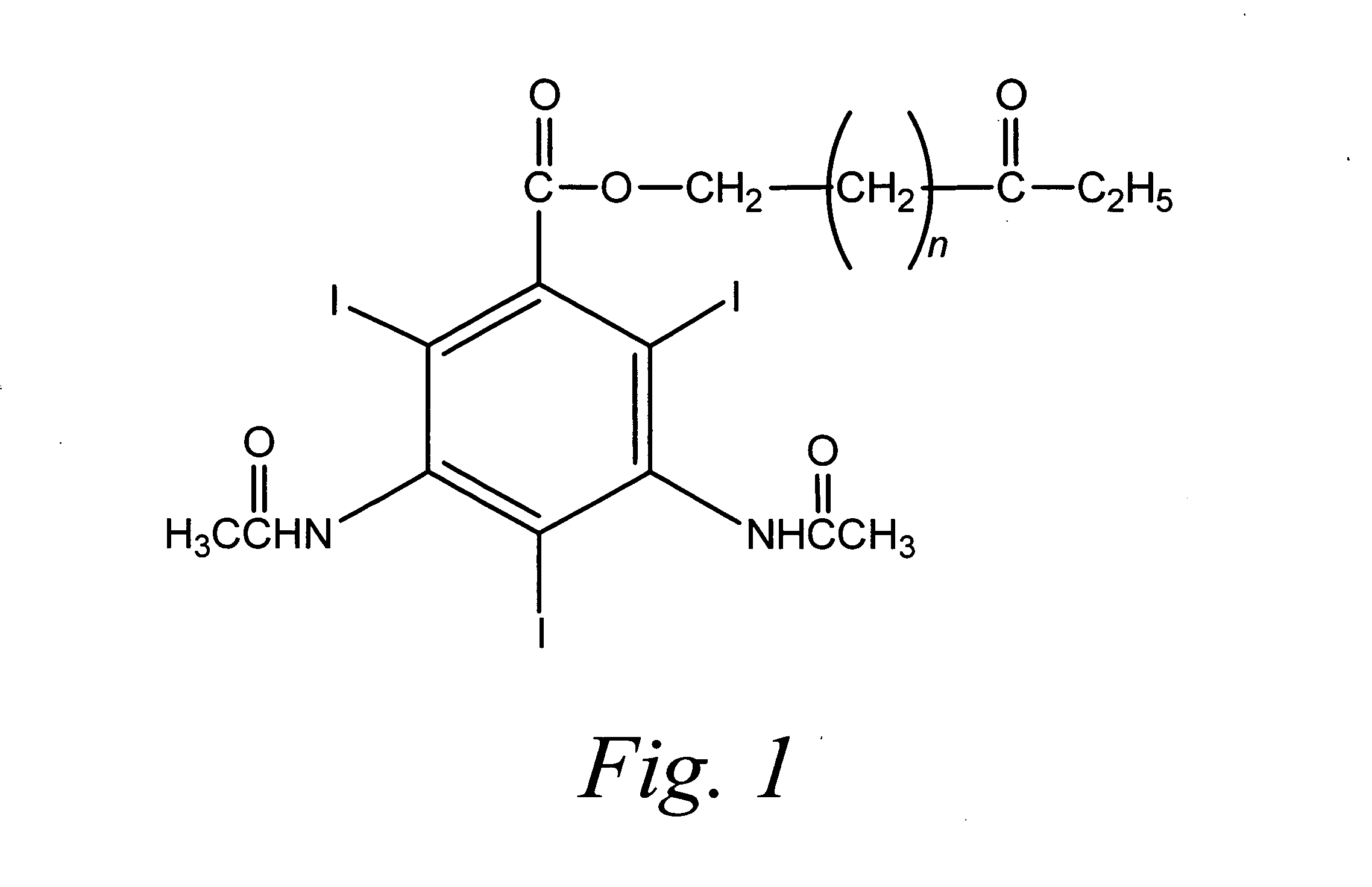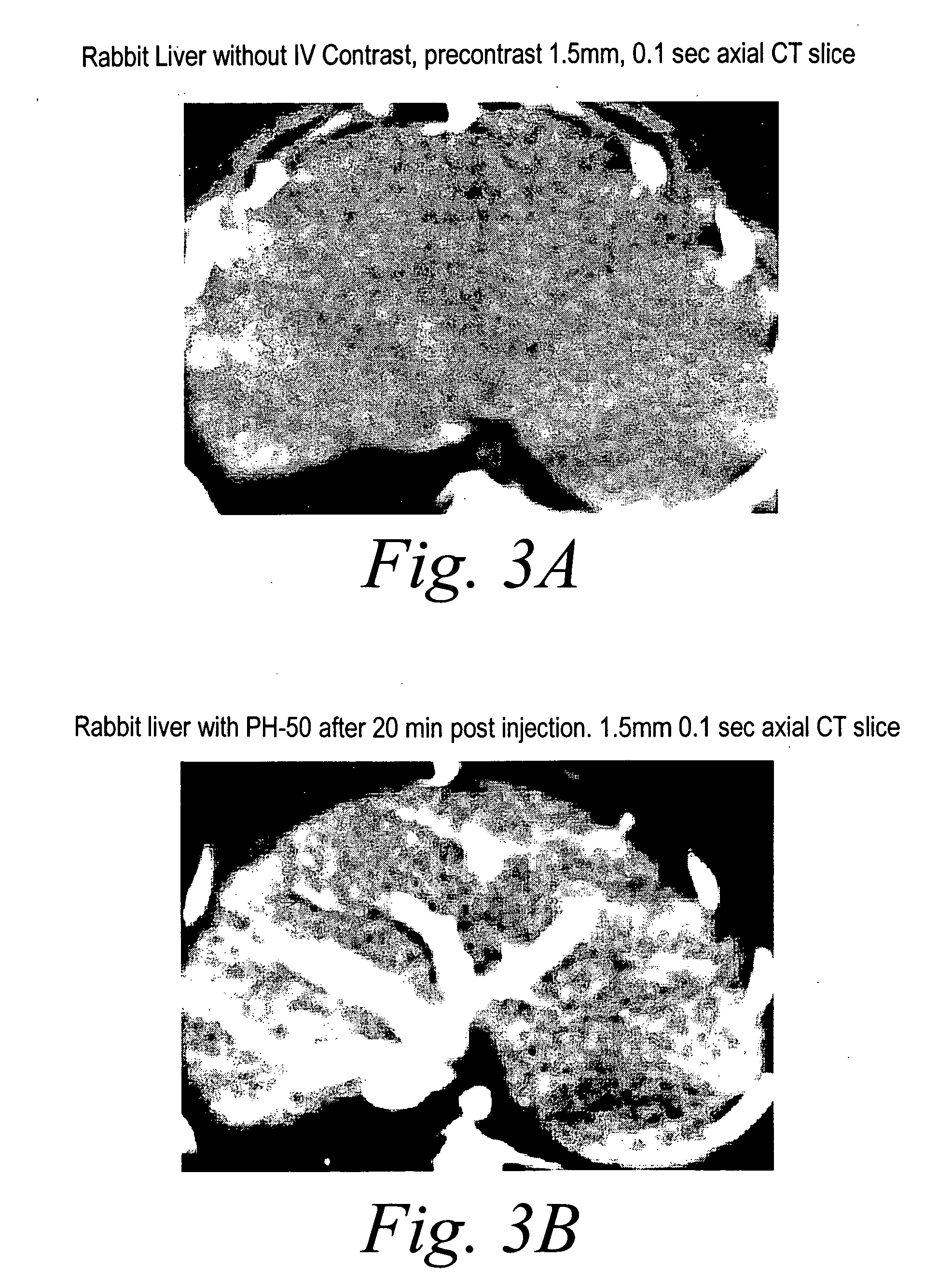Compositions and methods for delivering pharmaceutically active agents using nanoparticulates
a technology of nanoparticulates and pharmaceutically active agents, which is applied in the direction of nanomedicine, microcapsules, capsule delivery, etc., can solve the problems of inappropriate injury to host tissues, damage to the vascular system of the body, stroke,
- Summary
- Abstract
- Description
- Claims
- Application Information
AI Technical Summary
Benefits of technology
Problems solved by technology
Method used
Image
Examples
example 1
Example of Nanoparticulate Used in the Methods of the Invention:
[0101] Sterile WIN 67722 Suspension 150 mg / mL (referred to herein as "Sterile PH-50", "PH-50 Injectable Suspension" or "PH-50 drug product") is a parenteral iodinated x-ray contrast agent which has been utilized for indirect lymphography. The PH-50 compound is described, for example, in U.S. Pat. Nos. 5,322,679, 5,466,440, 5,518,187, 5,580,579, and 5,718,388. PH-50 has the empirical formula C.sub.19H.sub.23I.sub.3N.sub.2- O.sub.6 and has the chemical name 6-ethoxy-6-oxohexy-3,5-bis(acetylamino)-- 2,4,6-triiodobenzoate, an esterified derivative of the x ray contrast agent diatriazoic acid. PH-50 has a molecular weight of 756.1. The structural formula for PH-50 is shown in FIG. 1. The PH50 compound can be produced by the condensation of ethyl 6-bromohexanoate with sodium diatrizoate in DMF followed by the precipitation of the product from DMSO and washing with ethanol. PH-50 can be obtained from Sigma-Aldrich Fine Chemica...
example 2
Delivery of Nanoparticulates Used in the Methods of the Invention:
[0107] The following are examples showing PH-50 taken up by macrophages in the desired areas of treatment.
[0108] Following intravenous injection of PH-50 in rabbits, computer tomography images were taken at different time points after injection.
[0109] For example, FIGS. 2A and 2B show a CT scan of a rabbit heart 5 minutes prior to PH-50 injection (FIG. 2A) and 5 minutes after PH-50 injection (FIG. 2B). FIG. 3 shows the micro-perfusion of the cardiac tissue in the rabbit heart. FIGS. 3A and 3B illustrate the effectiveness of PH-50 in a rabbit liver. In particular, FIG. 3A shows a CT scan of a rabbit liver prior to PH-50 injection. FIG. 3B shows the rabbit liver 20 minutes post PH-50 injection wherein the microperfusions in the tissue are clearly illuminated. FIGS. 4A and 4B illustrate the results of scanning various aspects of a rabbit kidney after PH-50 injection. Each of these figures demonstrate the ability of the n...
PUM
| Property | Measurement | Unit |
|---|---|---|
| Particle size | aaaaa | aaaaa |
| Particle size | aaaaa | aaaaa |
| Particle size | aaaaa | aaaaa |
Abstract
Description
Claims
Application Information
 Login to View More
Login to View More - R&D
- Intellectual Property
- Life Sciences
- Materials
- Tech Scout
- Unparalleled Data Quality
- Higher Quality Content
- 60% Fewer Hallucinations
Browse by: Latest US Patents, China's latest patents, Technical Efficacy Thesaurus, Application Domain, Technology Topic, Popular Technical Reports.
© 2025 PatSnap. All rights reserved.Legal|Privacy policy|Modern Slavery Act Transparency Statement|Sitemap|About US| Contact US: help@patsnap.com



